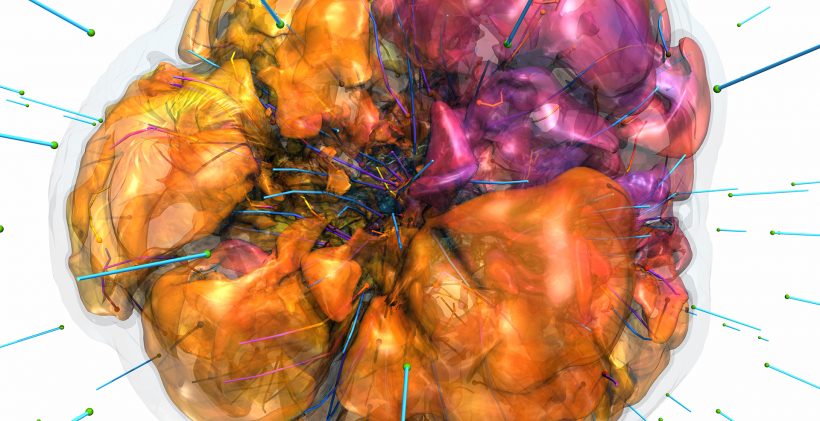A research team led by Princeton University is using supercomputers at Argonne National Laboratory to perform large-scale 3D simulations aimed at determining the mechanism of core-collapse supernova explosions.
This visualization shows the neutrino-driven roiling convection of the nuclear material behind the newly reenergized supernova shock wave that surrounds the newly birthed neutron star, just hundreds of milliseconds after shock revival. The neutrino-heated turbulent bubbles help drive the supernova explosion shock wave outwards.
Science: Adam Burrows and Hiroki Nagakura, Princeton University
Visualization: Joseph A. Insley and Silvio Rizzi, Argonne National Laboratory
